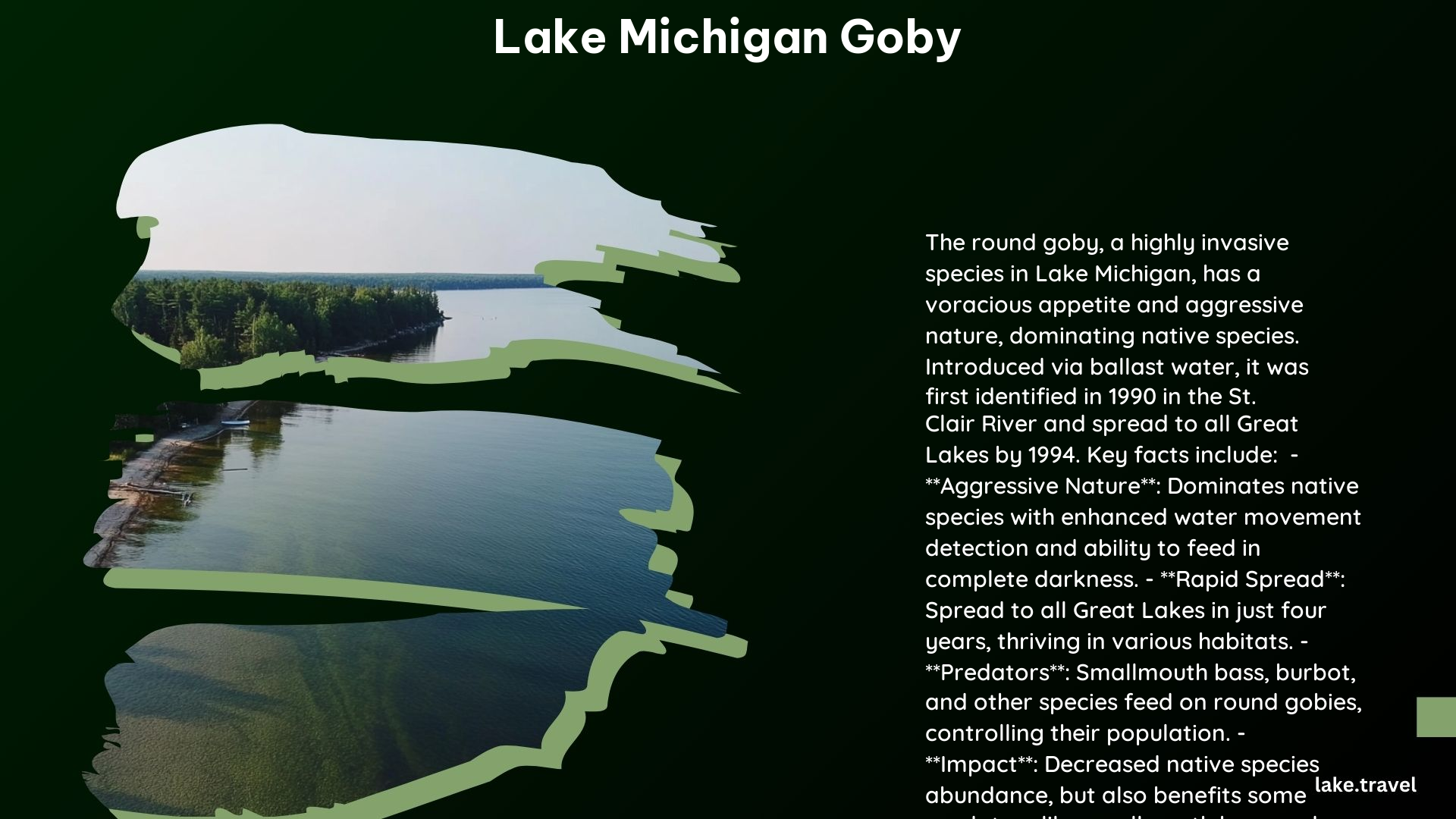The round goby (Apollonia melanostomus), also known as the Lake Michigan goby, is an invasive species that has significantly impacted the ecosystem of Lake Michigan. Originally native to the Black and Caspian Seas, this small fish has become a dominant predator in the Great Lakes, posing a threat to native species and altering the food chain.
Primary Food Sources of the Lake Michigan Goby

The round goby is a versatile feeder, with a diverse diet that includes:
- Zebra Mussels: As an opportunistic predator, the round goby has found a reliable food source in the invasive zebra mussel, which has also become established in the Great Lakes.
- Native Snails: The round goby’s appetite extends to native snail species, contributing to the decline of these important components of the ecosystem.
- Aquatic Insects: In addition to mollusks, the round goby also feeds on aquatic insects, further disrupting the native food chain.
- Smaller Individuals: Cannibalism is not uncommon, as round gobies will prey on smaller members of their own species, as well as the eggs of other fish, including the ecologically significant lake trout.
Impact on Native Fish Populations in Lake Michigan

The introduction of the round goby has had a significant impact on the native fish populations in Lake Michigan:
- Competition for Food and Habitat: The round goby’s aggressive nature and ability to thrive in poor water quality conditions have allowed it to outcompete native fish for both food and habitat resources.
- Predation on Native Eggs: The round goby’s appetite for fish eggs, including those of lake trout, has contributed to the decline of native fish populations.
- Changes in Native Fish Diets: The presence of round gobies has led to changes in the diets of native predators, such as smallmouth bass, which now feed on round gobies instead of their traditional prey, like crayfish.
Regulations and Management of the Lake Michigan Goby
Efforts to control and manage the round goby population in Lake Michigan include:
- Prohibited Use as Bait: In the state of Michigan, it is illegal to use round gobies as bait, as this could contribute to the further spread of the species.
- Reporting Sightings: Anglers and the public are encouraged to report any sightings of round gobies to help monitor and control their populations.
Predator Control and Ecosystem Adaptation
Despite the challenges posed by the round goby, there are some positive developments in the management of this invasive species:
- Predator Control: Studies have shown that native predators, such as burbot and smallmouth bass, are helping to control round goby populations in Lake Michigan.
- Ecosystem Adaptation: Over time, the Great Lakes ecosystem has shown some signs of adaptation to the presence of the round goby, with native species finding ways to coexist and even capitalize on the new food source.
Identification and Reporting of the Lake Michigan Goby
Anglers and the public can play a crucial role in the management of the round goby by being able to identify and report sightings of this invasive species:
- Identification: Round gobies can be identified by their fused pelvic fin, black spot on the rear of the first dorsal fin, and a slate gray color with black and brown blotches in older individuals.
- Reporting Tool: The Midwest Invasive Species Information Network (MISIN) provides an online reporting tool and a smartphone app for reporting round goby sightings, which helps researchers and resource managers track the spread and impact of this invasive species.
Conclusion
The introduction of the round goby, or Lake Michigan goby, has had a significant impact on the ecosystem of Lake Michigan. While the species has disrupted the native food chain and outcompeted many native fish, the Great Lakes ecosystem has shown some signs of adaptation, with native predators helping to control the round goby population. Continued monitoring, reporting, and management efforts are crucial to mitigating the long-term effects of this invasive species and preserving the ecological balance of Lake Michigan.
References:
– Tip of the Mitt Watershed Council. (n.d.). Round Goby. Retrieved from https://watershedcouncil.org/invasive-species/round-goby-2/
– Freedman, E. (2016, January 27). Round goby a good-news, bad-news Great Lakes invader. Great Lakes Echo. Retrieved from https://greatlakesecho.org/2016/01/27/round-goby-a-good-news-bad-news-great-lakes-invader/
– Great Lakes Now. (2022, April 18). I Speak for the Fish: How the round goby changed the Great Lakes. Retrieved from https://www.greatlakesnow.org/2022/04/round-goby-great-lakes/
– FishSens. (2022, August 24). Great Lake Predators Have Round Gobies Under Control. Retrieved from https://www.fishsens.com/lake-michigan-predators-likely-have-round-gobies-under-control/
– State of Michigan. (n.d.). Invasive Species: Round Goby. Retrieved from https://www.michigan.gov/invasives/id-report/fish/round-goby
